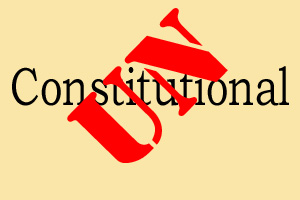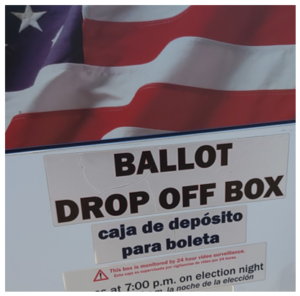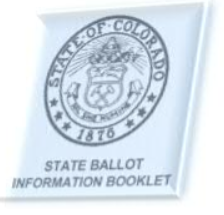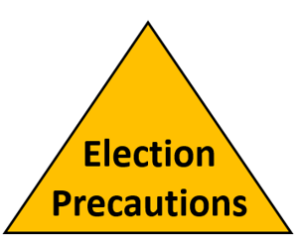 Several legislative committees held public meetings since the end of the last legislative session to discuss topics relevant to Colorado and to recommend legislation to the Legislative Council committee for approval for introduction in 2025. This is the first of two articles summarizing this interim’s committee actions. In this article we’re providing summaries of five of 10 committees and their recommended legislation. The Legislative Council met on Tuesday, October 15, to review interim committee legislation proposals. Click here to listen to the Legislative Council meeting.
Several legislative committees held public meetings since the end of the last legislative session to discuss topics relevant to Colorado and to recommend legislation to the Legislative Council committee for approval for introduction in 2025. This is the first of two articles summarizing this interim’s committee actions. In this article we’re providing summaries of five of 10 committees and their recommended legislation. The Legislative Council met on Tuesday, October 15, to review interim committee legislation proposals. Click here to listen to the Legislative Council meeting.
American Indian Affairs Interim Study Committee
The committee met four times during the interim and heard presentations from the Southern Ute Tribe; the Ute Mountain Ute Tribe; the Denver American Indian Commission; the Truth, Restoration, and Education Commission of Colorado; the Department of Law; the Department of Natural Resources; the Colorado Commission of Indian Affairs; the Office of the Liaison for Missing and Murdered Indigenous Relatives; and American Indian community stakeholders. The meetings included public testimony and discussions related to the challenges faced by American Indian communities, including the topics concerning health disparities, judicial concerns, the Indian Child Welfare Act, water matters, and access to public services. The committee requested the drafting of six bills and recommended the following three bills to the Legislative Council:
- Bill A – American Indian Affairs Interim Committee. The bill creates the American Indian Affairs Interim Committee with the purpose to examine issues and challenges that impact American Indian Tribal Nations. It allows the committee to meet up to six times and to recommend up to five bills during each interim. The bill also requires the committee to submit a report to the Executive Committee of the Legislative Council summarizing the work of the Committee during the preceding five years.
- Bill B – Recognition of Tribal Court Orders. Current law does not expressly allow for the state to recognize arrest warrants or commitment orders issued by a Tribal court of a federally recognized Tribe with a reservation within the exterior boundaries of the state (Tribal court). The bill clarifies that a state court shall give full faith and credit to an arrest warrant issued by a Tribal court. Upon issuance of a Tribal court arrest warrant, a peace officer in the state may apprehend the person identified in the Tribal warrant. The bill clarifies that any commitment order entered by a Tribal court that concerns a person under the Tribal court’s jurisdiction is recognized to the same extent as a commitment order entered by a state court, including health-care provider communications.
- Bill C – Protect Wild Bison. The bill classifies bison as big game wildlife unless the bison is livestock. This classification means that hunting or taking one is illegal unless authorized by rule of the Parks and Wildlife Commission.
Wildfire Matters Review Committee
The committee met five times during the 2024 interim. It heard testimony and otherwise received information from the Colorado Forest Health Council, the Colorado State Forest Service, the Department of Natural Resources, the Division of Fire Prevention and Control in the Department of Public Safety, the Department of Public Health and Environment, the Colorado Fire Commission, the Division of Insurance in the Department of Regulatory Agencies, local government representatives, and private industry stakeholders. The committee initially requested the drafting of ten bills and recommended the following five bills to the Legislative Council for consideration:
- Bill A – Applying Artificial Intelligence to Predict, Prevent, or Assist in Fighting Wildfires. The bill requires the General Assembly to appropriate money to the Division of Fire Prevention and Control to study and develop applications of artificial intelligence that predict, mitigate, or assist in fighting wildfires. These applications must, at a minimum, produce data that can be incorporated into maps displaying classification of vegetation and wildfire fuel; predictions regarding the likelihood of wildfire ignition potential in a particular area following observed lightning events; the perimeter of an ongoing wildfire; and predictions regarding the locations and area to which an ongoing wildfire may spread.
- Bill B – Limited Liability for Landowners Who Allow Emergency Access to Property. The bill provides immunity from civil liability for damage or injury to persons or property, other than that which arises from gross negligence or willful misconduct, to a landowner who allows access to the landowner’s property for entry and exit in connection with an emergency.
- Bill C – Workforce Development in Natural Resources. The bill authorizes the Colorado Cooperative Extension Service to expand and implement outreach programs and initiatives to youth and young adults, in partnership with the forest health industry, local school districts, the Colorado State Forest Service, the Division of Fire Safety and Control in the Department of Public Safety, and others. The outreach programs and initiatives are intended to increase awareness and opportunities in the areas of forestry, wildland fire, and natural resources and, in future years, may include expanding 4-H programs, facilitating career and workforce readiness and entry into forest health careers. The Extension shall make annual reports and is authorized to provide need-based grants to fire service governing bodies and volunteer fire departments to fund ongoing training and create a statewide outreach program to promote fire service careers.
- Bill D – Updating the Wildfire Information and Resource Center Website. The Division of Fire Prevention and Control is currently required to host the Wildfire Information and Resource Center website and to provide information regarding active wildfires on the website. The bill requires the website to include hyperlinks to websites that display emergency information and wildfire updates for each county in Colorado and requires the division to coordinate with county governments in order to provide the hyperlinks.
- Bill E – Support to Increase Prescribed Burns. The bill creates the Prescribed Fire Claims Cash Fund in the state treasury, requires the treasurer to transfer $1 million to the fund, and requires the Division of Fire Prevention and Control to use the money to pay claims related to costs or damages that result from prescribed burns. It also expands the definition of a “certified burner” in the state to include an individual who has not completed the Colorado division’s training and certification program but who meets reciprocity requirements and possesses a valid Colorado certification number.
Representative Hugh McKean Colorado Youth Advisory Council Review Committee
The committee met three times during the interim and heard presentations from its student members about ADA-compliant school facilities, health literacy, school transportation, solar energy, youth representation on the Environmental Justice Advisory Board, community engagement on environmental matters, food waste, and opioid antagonists. The committee requested drafts of six bills and recommended the following three bills to the Legislative Council:
- Bill A – Create Youth Health Literacy Oversight Panel. The bill creates a youth health literacy oversight panel in the Department of Public Health and Environment to identify deficits in youth health literacy and recommend improvements. The panel must recommend revisions to the elementary and secondary education standards, which the State Board of Education must in turn consider. The panel must also develop or revise a range of youth health literacy resources and submit an annual report to the General Assembly describing its work, along with related data and trends.
- Bill B – Food Waste Reduction in Public Schools. The bill encourages local education providers to adopt policies to reduce food waste in public school cafeterias and food preparation facilities. Policies may include composting and share tables that permit students to return whole food or beverage items for redistribution to other students or local nonprofits. The bill requires the Colorado Circular Communities Enterprise to consider incentivizing public schools to develop effective composting or share table programs. The bill extends limited immunity from civil and criminal liability to schools and school personnel who supervise food and beverage redistribution.
- Bill C – Youth Involvement in Environmental Justice. The bill adds two youth members—one voting, one nonvoting—to the Environmental Justice Advisory Board in the Colorado Department of Public Health and Environment. The bill also requires the Colorado Energy Office to develop and post on its website best practices for the adoption and financing of clean energy resources in schools. The office must periodically update the best practices and post the updates on its website.
Sales and Use Task Simplification Task Force
The task force met four times during the interim. It heard presentations from the Department of Revenue, the Colorado Municipal League, local government representatives, and private industry stakeholders. The meetings included public testimony and discussions relating to the electronic Sales and Use Tax Simplification System (SUTS), the state sales tax on rooms and accommodations, state-administered local lodging taxes, municipal use tax coordination efforts, and state and local sales and use tax audit processes. The task force made five bill requests and recommended two bills to the Legislative Council for introduction as follows:
- Bill A – Local Government Tax Audit Confidentiality Standards. The bill prohibits a third-party auditor who conducts a sales or use tax investigation on behalf of a local taxing jurisdiction from divulging any information obtained from the investigation, or from any document, report, or return filed in connection with the local sales or use tax, except in certain limited circumstances, including disclosure to:
- An official, employee, hearing officer, attorney, or other public agent of the local taxing jurisdiction who is authorized to receive such information;A requesting taxpayer, or the taxpayer’s authorized agent, of the taxpayer’s own tax filing;The Department of Revenue (department) for purposes of statistical analysis and publication as authorized by current law; andThe department and the Federal Internal Revenue Service as necessary and pertinent to a taxpayer’s compliance or failure to comply with state or federal tax law.
- Violation of the prohibition on disclosure is a misdemeanor punishable by a fine. The bill also modifies the state-level confidentiality statute for the protection of taxpayer information to clarify that certain information may be shared governmental entities, as needed, consistent with current law.
- Bill B – Online Search of Sales and Use Tax. The bill modifies the state-level confidentiality statute for the protection of taxpayer information to authorize and instruct the executive director of the department to allow every sales and use tax license and every sales and use tax exemption certificate to be made searchable by the name and identification number of the licensee or the certificate holder.
Water Resources and Agriculture Review Committee
The Water Resources and Agriculture Review Committee, which is actually a year-round committee, met four times during the interim and heard presentations concerning orphaned mines and acid drainage, avian flu, raw milk, energy building codes in agricultural properties, foreign ownership of agricultural land, revegetation, tap fees, zebra mussels, and gray wolf reintroduction. The committee had 15 bills drafted and recommended the following eight bills to the Legislative Council:
- Bill A – Remove Gendered Language from Title 35. The bill substitutes gender-neutral language for gendered language in title 35 of the Colorado Revised Statutes. The bill also updates archaic language in title 35.
- Bill B – Wildlife Damaged Protection of Personal Information. Under current law, a person may file a claim with the Division of Parks and Wildlife for compensation for damages to property caused by wildlife, and the division must review and investigate that claim. The bill changes current law by requiring that the personal information of a claimant received by the division through the claim procedures and proactive nonlethal measures is kept confidential and not disclosed pursuant to the “Colorado Open Records Act”.
- Bill C – Mining Reclamation & Interstate Compact. The bill amends the “Colorado Mined Land Reclamation Act” and the “Colorado Land Reclamation Act for the Extraction of Construction Materials” to contemplate the expedited issuance of reclamation-only permits to persons desiring to conduct reclamation-only operations after July 1, 2025, on less than five acres and to update restrictions and requirements concerning the posting and forfeiture of financial warranties relating to mine reclamation projects. The Office of Mined Land Reclamation may not issue a reclamation-only permit to a designated mining operation. The bill also enacts the “Interstate Mining Compact” and ratifies Colorado’s membership in the associated Interstate Mining Commission.
- Bill D – Agriculture Building Exempt from Energy Use Requirements. Under current law, owners of certain large buildings (covered buildings) are required to annually collect and report each covered building’s energy use to the Colorado Energy Office. The bill clarifies that agricultural buildings are not covered buildings, and, therefore, owners of agricultural buildings are exempt from the energy use collecting and reporting requirements. The bill defines an agricultural building as a building or structure used to house agricultural implements, hay, unprocessed grain, poultry, livestock, or other agricultural products or inputs.
- Bill E – Ranch Property Tax Clarifications. The bill broadens the definition of “ranch” for purposes of property taxation to include a parcel of land used for grazing or raising livestock for the primary purpose of obtaining a monetary profit rather than a parcel of land used only for grazing livestock for the primary purpose of obtaining a monetary profit. The bill also eliminates the limited definition of “livestock” included in the definition of “ranch” and replaces it with the general definition of “livestock” used for property tax purposes that includes all animals.
- Bill F – Backflow Prevention Devices Requirements. Backflow is the reverse flow of water, fluid, or gas caused by back pressure or back siphonage. Under current law, individuals who are engaged in the business of installing, removing, inspecting, testing, or repairing backflow prevention devices are subject to the licensure requirements for plumbers, except when the individuals are installing or testing a stand-alone fire suppression sprinkler system. The bill exempts individuals engaged in the business of inspecting, testing, or repairing backflow prevention devices from licensure requirements but retains the licensure requirements for individuals engaged in the installation or removal of the devices.
- Bill G – Future of Severance Taxes & Water Funding Task Force. The bill creates the Future of Severance Taxes and Water Funding Task Force. The Department of Natural Resources is required to contract and work with a third party to conduct a study on severance taxes and water funding and develop recommendations for ways to continue funding water needs in the face of decreasing severance tax revenue. The third party must submit a final report, which incorporates the input of the task force, to the Water Resources and Agriculture Review Committee.
- Bill H – Continue Wildlife Habitat Stamp Program. Individuals applying for hunting or fishing licenses in Colorado must also purchase a Colorado wildlife habitat stamp. The Division of Parks and Wildlife in the Department of Natural Resources uses the money collected from the stamp for the benefit of wildlife habitat or access to wildlife habitat in the state. The stamp program is scheduled to repeal, subject to a sunset review by the Department of Regulatory Agencies, in 2027. The bill continues the program indefinitely.




















